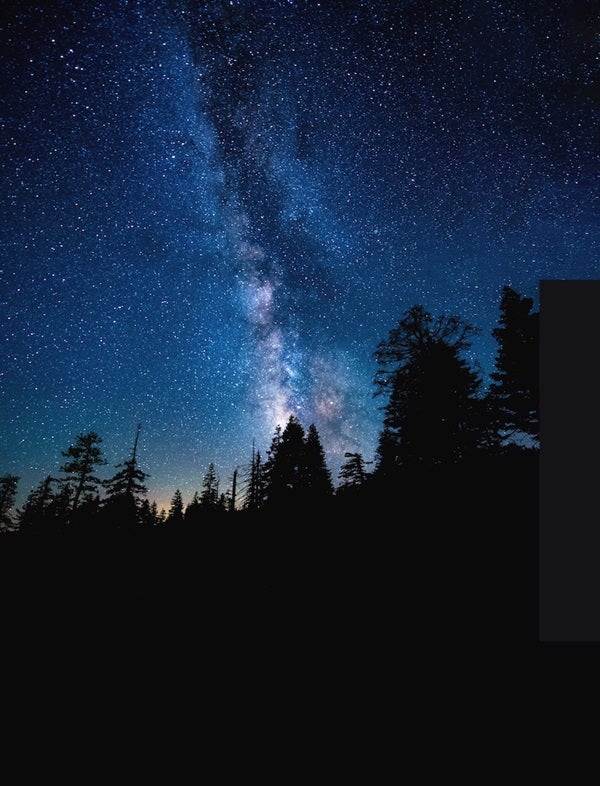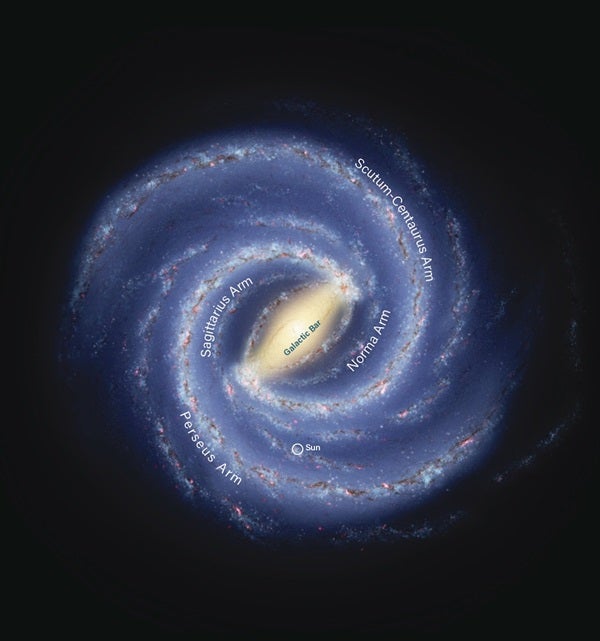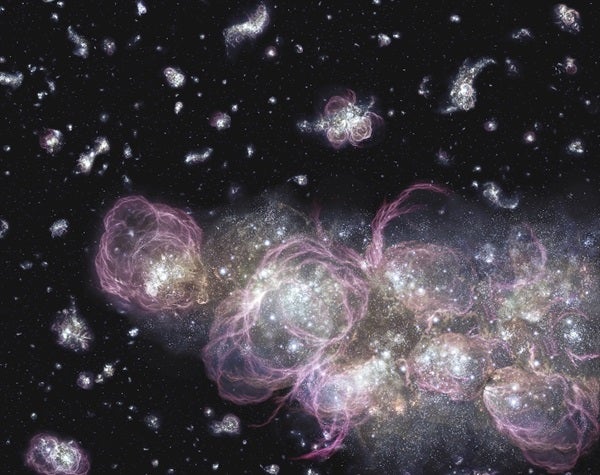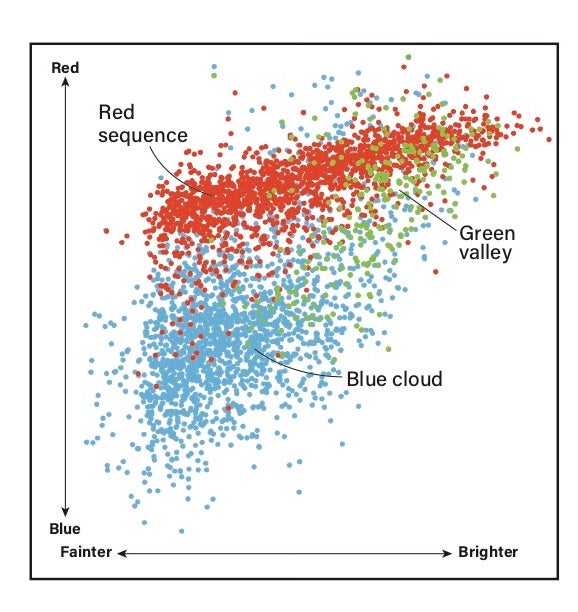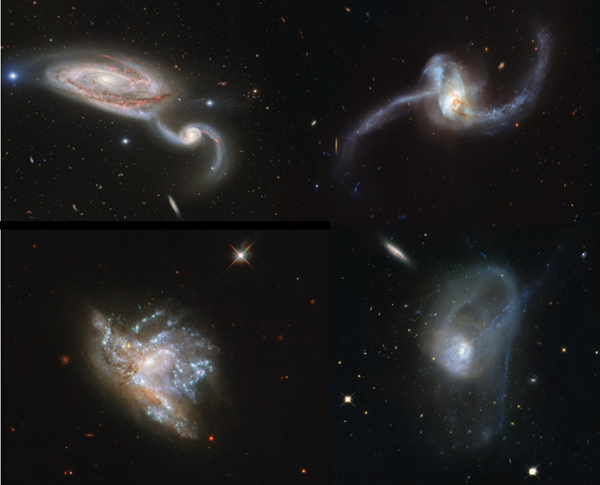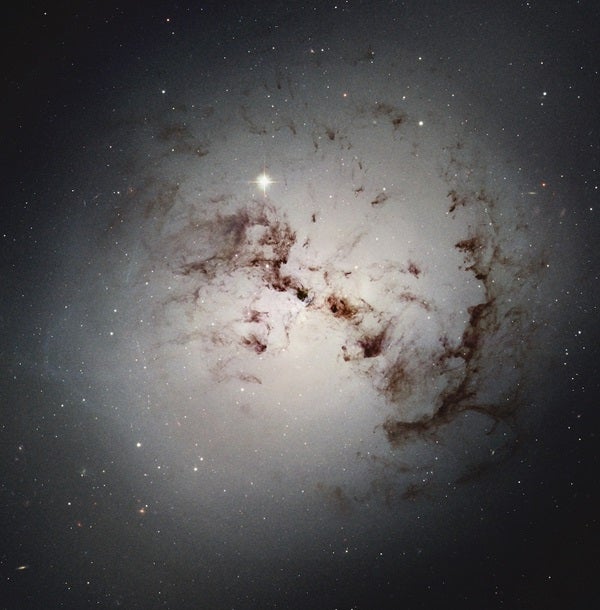This story comes from our special January 2021 issue, “The Beginning and the End of the Universe.” Click here to purchase the full issue.
From a dark site on a clear winter night, the sky in the Northern Hemisphere is dominated by a fuzzy band of light that’s been called the Milky Way for more than 2,000 years. Starting in the north, its densest section winds through the constellations Perseus, Auriga, Taurus, Gemini, Monoceros, Canis Major, and Puppis, before disappearing beneath the southern horizon.
Point a telescope in its direction and you’ll confirm what Italian astronomer Galileo Galilei saw through his first instrument: The Milky Way is made of countless stars. Of course, the past 400 years have revealed other features as well. Among them are bright and dark nebulae, star clusters, and the fading remnants of dead suns. For much of those four centuries, astronomers focused their efforts on surveying our galaxy. They learned its size, shape, mass, motion, and lots more. Yet one big question remains: How did the Milky Way form?
Top-down or bottom-up?
Historically, there have been two general lines of thought about how galaxies form.
The first to take hold was the “top-down” model of galaxy formation. This scenario posits giant sheets of matter formed first, and then later broke up into smaller, galaxy-sized units that collapsed to the familiar disk structures we see today. The earliest top-down model of galaxy formation appeared in 1962. It’s usually referred to as ELS, because the scientists who developed it were American astronomer Olin Jeuck Eggen, British astrophysicist Donald Lynden-Bell, and American astronomer Allan Sandage.
But thanks to evidence from powerful modern telescopes, the vast majority of galactic researchers now think it’s more likely the Milky Way formed in a “bottom-up” fashion. This model describes the unions of protogalaxies — smaller blobs of gas that evolved into dwarf galaxies in the early universe and merged with each other to form larger galaxies.
Evidence that mergers are the primary way to form galaxies comes from the Hubble Deep Field Project, started in 1995, and its follow-up efforts, which sought to make the most sensitive images ever in visible light. These images of otherwise-nondescript patches of sky show distant galaxies and numerous bloblike objects that appear to be protogalaxies. Scientists think these fragments merged to form the larger galaxies that we now observe. If this is correct, the Milky Way probably formed when gas clouds and star clusters in the early universe came together to create the galaxy’s core. Some researchers believe the Milky Way may have grown from the mergers of 100 or more small galaxies over time.
Another bottom-up theory states that many dark matter halos, each with about the mass of a globular cluster, formed after the Big Bang. Through gravity, these halos merged and attracted baryonic (normal) matter, which eventually cooled enough to contract and form galaxies like the Milky Way.
Once these initial galaxies formed, they began attracting one another to form groups (in our case, the Local Group) and finally galaxy clusters (such as the neighboring Virgo Cluster). This particular theory also predicts lots of small galaxies and relatively few large ones. And that’s precisely what we see as we gaze into the universe.
A growing galaxy
Within a billion or so years after the Big Bang, the Milky Way had accumulated a great deal of mass. As much of it settled into the core, the galaxy’s initial slow spin accelerated due to conservation of angular momentum. The spinning sphere of material quickly evolved into a disk. Subsequent generations of stars, including the Sun, formed in the disk.
But while it had become a galaxy, the Milky Way wasn’t finished growing. Over time, our galaxy has grown further through the accretion of gas. Currently, much of that gas comes from the Large and Small Magellanic Clouds, the Milky Way’s two largest satellite galaxies. Astronomers call this inflow, which was discovered in 1965, the Magellanic Stream.
Another source of gas for our galaxy is the Smith Cloud, discovered in 1963 by Gail P. Smith, an American student who was then studying astronomy at Leiden University in the Netherlands. This cloud of hydrogen is approximately 10,000 light-years long and 3,000 light-years wide. Astronomers originally estimated its mass at between 1 million to 2 million times that of the Sun. Current studies, however, indicate that it may have a dark matter halo up to 100 times that mass. If so, a better classification for the Smith Cloud might be a dwarf galaxy. It’s heading toward the Milky Way at 200,000 mph (320,000 km/hr) and should begin to collide with the Perseus Arm of our galaxy in some 27 million years.
From disk to sphere
By studying large numbers of galaxies, cosmologists have concluded that there are three types. This becomes evident when placing galaxies on a color-magnitude diagram, which plots their true brightness on one axis and their mass on the other. Spiral or disk galaxies — which are blue with the light of young, hot stars — fall into a region of the diagram called the blue cloud.
Astronomers now think that disk galaxies formed first, then evolved into elliptical galaxies through galaxy mergers that destroyed their flat structure. Researchers can point to many examples of merging galaxies, most of which involve two spirals that are gravitationally bound, and perhaps have been since their formation. If both galaxies have nearly the same mass, the single galaxy formed once the merger is complete won’t look like either of them — it will be an elliptical galaxy.
But the Milky Way and other members of the green valley are running out of gas. Computer simulations show that all star formation in the Milky Way will stop in about 5 billion years. That’s accounting for the increase in star formation when the Milky Way and the Andromeda Galaxy collide around that time. The product of this merger will likely be a giant, red elliptical galaxy.
Thus, some 19 billion years after the Big Bang, the Milky Way will begin its slow but inexorable decline — and, a trillion years from now, the end will come as its last star fades from visibility.

